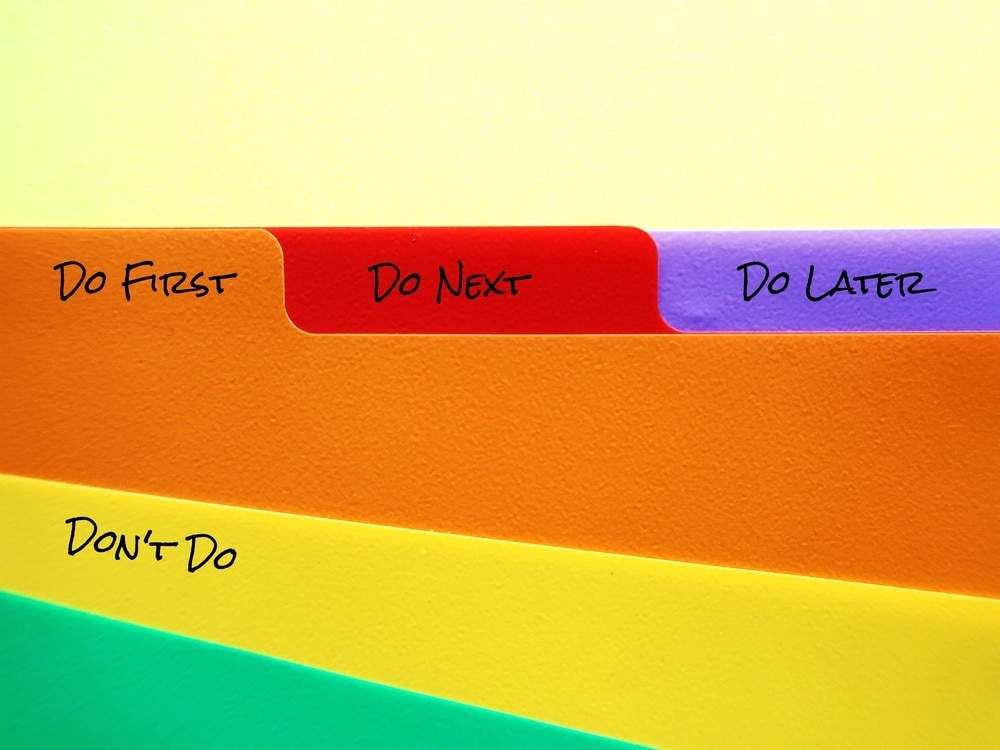In today’s fast-paced world, there is an endless list of things that demand our attention. From work projects to household chores, and from personal goals to social commitments, it often feels like there are never enough hours in the day to get everything done. However, the truth is, you can do anything but not everything. The key to success lies in understanding this principle and implementing effective strategies for prioritization and time management.

The Art of Prioritization
Prioritization is the process of determining which tasks or activities should be tackled first based on their importance and urgency. By focusing on the most critical items on your to-do list, you will make better use of your time and energy, ultimately achieving more with less effort. Here are some valuable tips for mastering the art of prioritization:
- Set clear goals: Knowing what you want to achieve – both in the short-term and long-term – will help you identify the tasks that are truly important and deserve your focus.
- Evaluate tasks based on impact: Not all tasks are created equal. Some have a much greater influence on your life, career, or relationships than others. Assess each task’s potential impact and prioritize accordingly.
- Limit your to-do list: Studies show that trying to accomplish too many tasks at once leads to decreased productivity and increased stress. Keep your daily to-do list short and focused, allowing yourself time to complete tasks thoroughly and without feeling overwhelmed.
- Be realistic about your capacity: Acknowledge that you cannot do everything and learn to be selective about where to invest your time and energy.
Embracing the Power of ‘No’
One of the most effective ways to prioritize your tasks and focus on what truly matters is to learn the art of saying “no.” This might mean turning down requests from friends, family, or colleagues, or simply putting some of your own personal goals on hold. Although it may be challenging at first, learning when and how to say no can bring numerous benefits:
- Increased productivity: By declining tasks that are not aligned with your priorities, you’ll have more time to dedicate to your most important projects.
- Better work-life balance: Saying no allows you to maintain a healthy balance between your professional and personal life, preventing burnout and ensuring you have time for self-care and leisure activities.
- Improved decision-making: When you set boundaries around your time, you become more discerning about which opportunities and commitments to take on, leading to better choices in both your personal and professional life.
Tips for Saying No Gracefully
While it’s essential to learn when to say no, it’s equally important to know how to do so without causing offense or damaging relationships. Here are some pointers for saying no tactfully and effectively:
- Be honest: If you’re overwhelmed with other commitments, explain why taking on another task would be challenging for you.
- Offer alternatives: If possible, suggest alternative solutions or individuals who might be able to help with the request.
- Express gratitude: Thank the person for thinking of you and acknowledging that their request is important, even if you’re unable to take it on.
- Be assertive: Stand firm in your decision and avoid wavering or apologizing excessively for your inability to accommodate the request.

Making Time Management Work for You
In addition to prioritization, effective time management is essential for making the most of your available hours. Here are some proven strategies for taking control of your time and maximizing productivity:
- Break tasks into smaller chunks: Large projects can feel overwhelming and lead to procrastination. By breaking tasks down into smaller, more manageable steps, you’ll be more likely to make progress and stay on track.
- Set deadlines: Deadlines create a sense of urgency that can help motivate you to complete tasks efficiently. Be realistic about the time needed for each task, and hold yourself accountable for meeting those deadlines.
- Eliminate distractions: Identify the sources of distraction in your environment and find ways to minimize them, whether by turning off notifications, setting boundaries with family members, or using noise-canceling headphones.
- Focus on one task at a time: Multitasking has been shown to reduce productivity and increase stress. Try focusing on a single task until it’s complete before moving on to the next item on your list.
Embracing Time-Management Tools and Techniques
There are numerous tools and techniques available to help improve your time-management skills. Some popular options include:
- Pomodoro Technique: This method involves working in short, focused bursts (typically 25 minutes) followed by a brief break. After completing four work sessions, take a longer break to recharge.
- Time blocking: Scheduling specific time blocks for different tasks throughout the day can help ensure that you stay on track and dedicate sufficient time to each item on your to-do list.
- Digital tools and apps: Many digital tools can help with time management, including task managers like Todoist or Trello, time trackers such as Toggl, and calendar apps like Google Calendar.
You Can Do Anything But Not Everything: Summary
In conclusion, achieving more by doing less is an attainable goal when you embrace the power of prioritization and effective time management. By focusing on what truly matters, setting boundaries, and making efficient use of your available time, you’ll be well on your way to living a more productive, balanced, and fulfilling life.


















